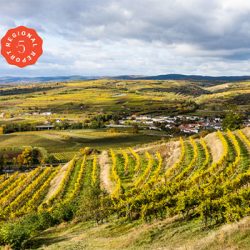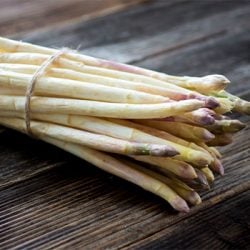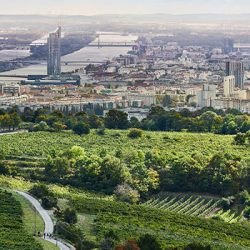Monk Mind:
Michael Moosbrugger at Schloss Gobelsburg
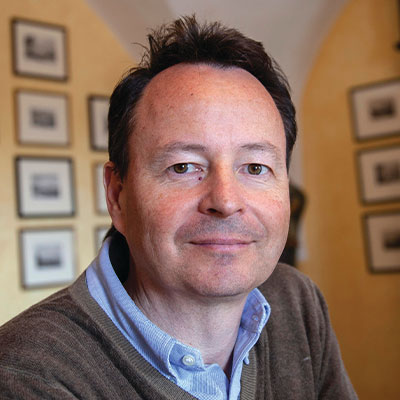

As winemaker for an 850-year-old estate, Michael Moosbrugger has some advantages. There are the vineyards to start with, parcels that the Cistercians began tending in the 1100s, just as their brethren were doing in Vougeot and Chablis in Burgundy. And they’ve left him centuries of detailed harvest records and a cellar of old vintages. It’s learning how to think and plan on such an expansive time scale that’s challenging, Moosbrugger says. He offers an example: “We’d outgrown our cellar space and so I wanted to build a new one. But in order to make it consonant with the existing space, I wanted something that would last 500 years.” His architect blanched. “He said, ‘That’s a problem. We can’t use cement or steel—those have only a hundred-year lifespan.’” Five years and a half-million bricks later, the new cellar will open in summer 2022.
Moosbrugger approaches the monastery’s vineyards with a similarly long-range view. “There are two questions,” he says. “‘What can I do in a vineyard?’ and ‘how is the vineyard best expressed?’” He chooses to answer the second, preferring even to label the single-vineyard wines without noting the grape variety, as the monks used to do. “Until World War II, all the vineyards were mixed plantings,” he points out. After the war, vintners pulled out their vines and replanted so they could use tractors. At Gobelsburg, the move to single-varietal parcels was slow, as picking has always been done by hand, and the monks only replanted when a plant became unproductive or died, adjusting the vineyard’s varietal makeup according to what thrived. It wasn’t until the 1980s that vineyards such as Heiligenstein became all riesling, and Lamm all grüner veltliner.
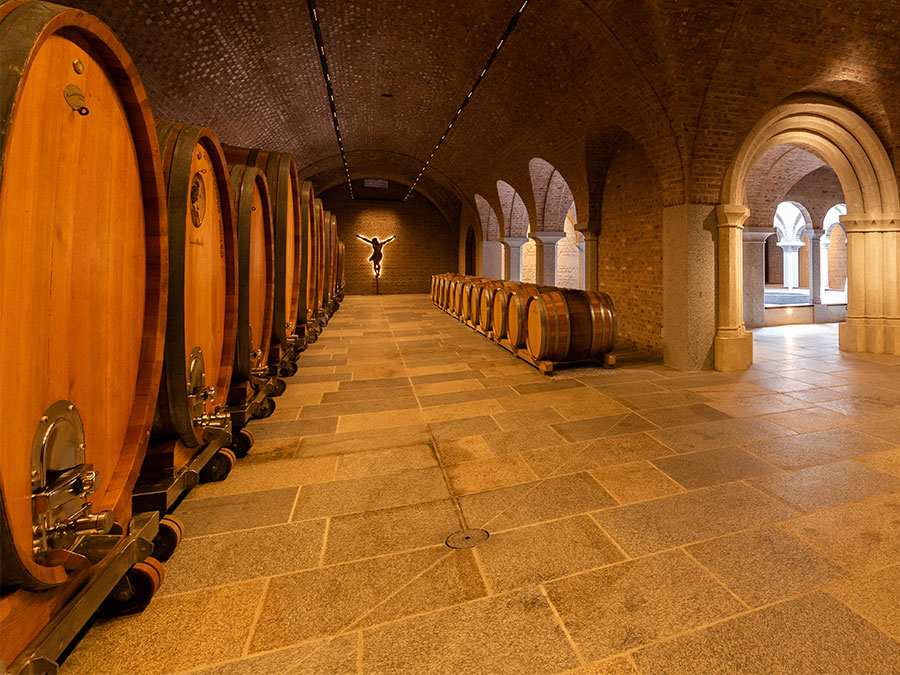

Photo by Michael Moosbrugger
That focus is consonant with the contemporary understanding of the grape varieties, as grüner veltliner prefers to grow in a soft bed of lime-rich loess while riesling is one of the few vines able to hack Heiligenstein’s thinly veiled ancient bedrock. And certainly Gobelsburg’s wines stand out for their clarity of expression: Riesling channels the herbal, nervy cut of cool Steinsetz or the spare, soaring feel of Heiligenstein, while veltliner is the conduit for Lamm’s lush loess. But change happens for myriad reasons, Moosbrugger points out, from climate to the Zeitgeist of the time. He points to the rise of sweet Mosel riesling in the late 19th century as an example—a style that arose out of a confluence of several factors: a new train line connecting Trier to Köln, the advent of pasteurization, and perception of sweetness as luxury. In late-20th-century Austria, the focus was on clean, powerful, single-varietal expressions of single vineyards.
But who’s to say that will continue to be the way forward? Moosbrugger, for his part, is exploring other options. In 2009, Moosbrugger began setting wines aside in barrel, another practice he adopted from the monks; he’s up to 100 hectoliters (2,642 gallons) of reserves now (thus the need for the new cellar). In 2021, to mark the winery’s 850th anniversary, he introduced a blend of reserves stretching back to the early 1970s, mixing vintages as well as grape varieties. The Tradition Heritage 50 Years bottling filled only 3,410 bottles, but he liked the concept so well that he’s replaced the winery’s former Tradition Grüner Veltliner bottling with a three-year and a ten-year mixed-vintage blend of riesling and grüner veltliner.
Is this the way of the future? Moosbrugger wouldn’t say, but in a changing climate with changing tastes, it seems like a smart move.
is W&S’s editor at large and covers the wines of the Mediterranean and Central and Eastern Europe for the magazine.
This story appears in the print issue of February 2022.
Like what you read? Subscribe today.


